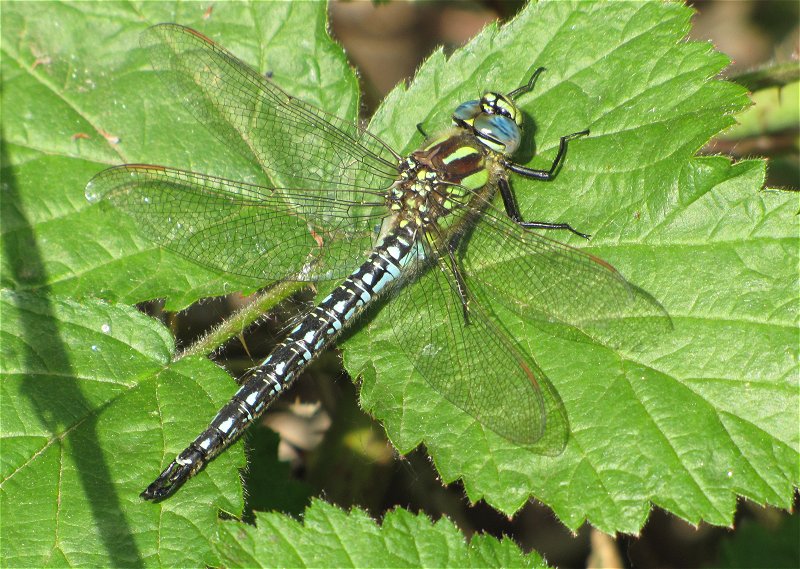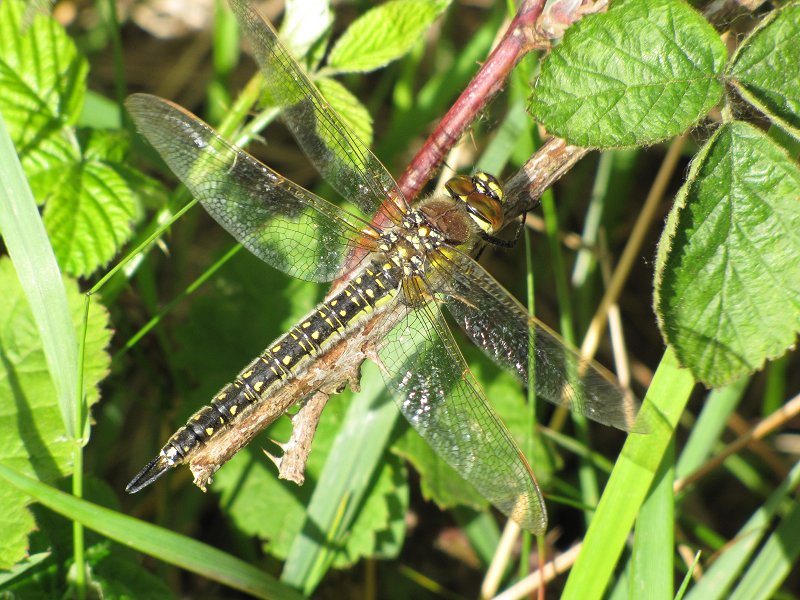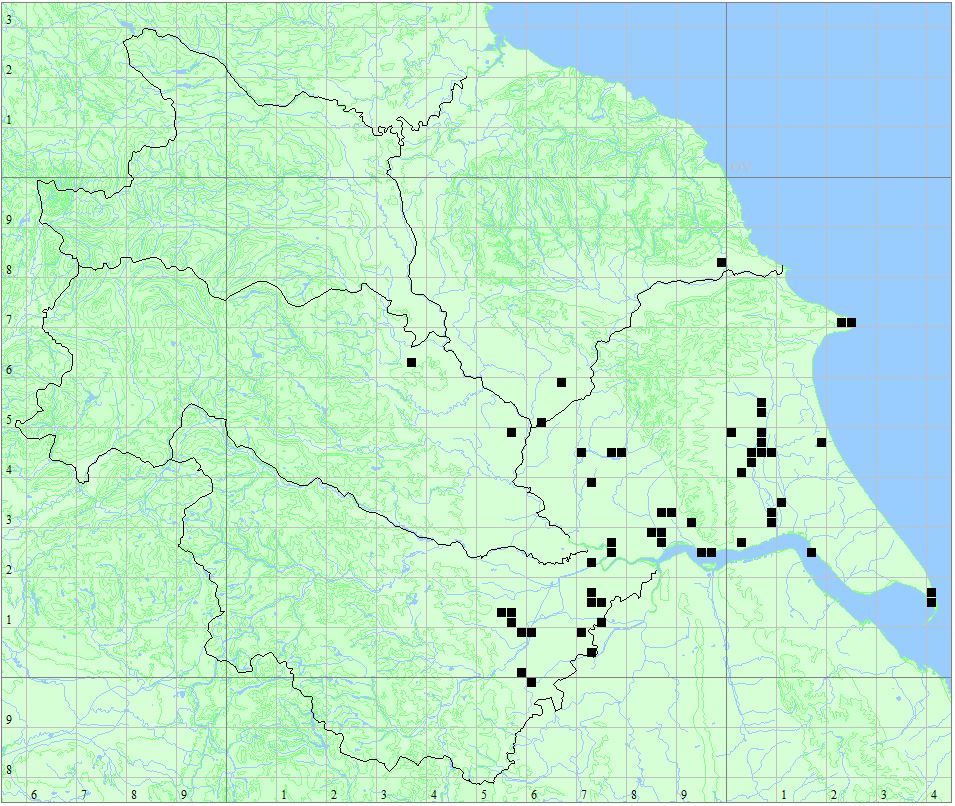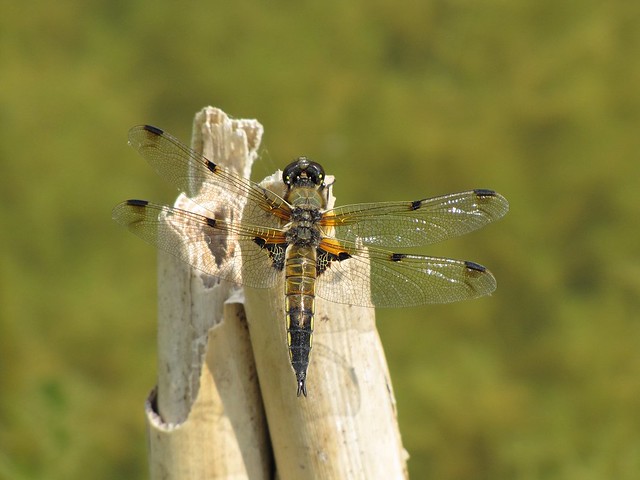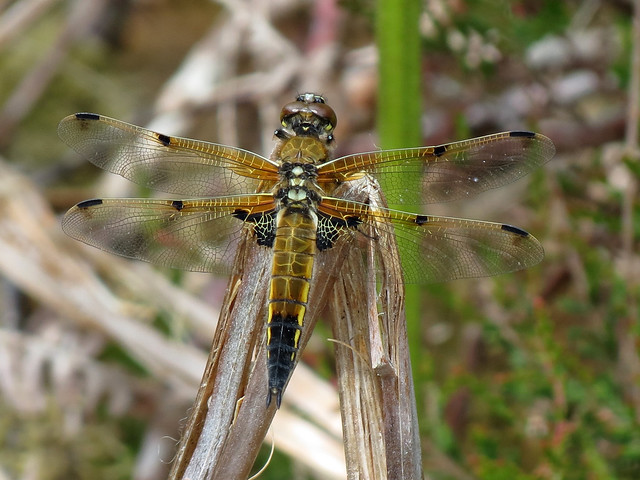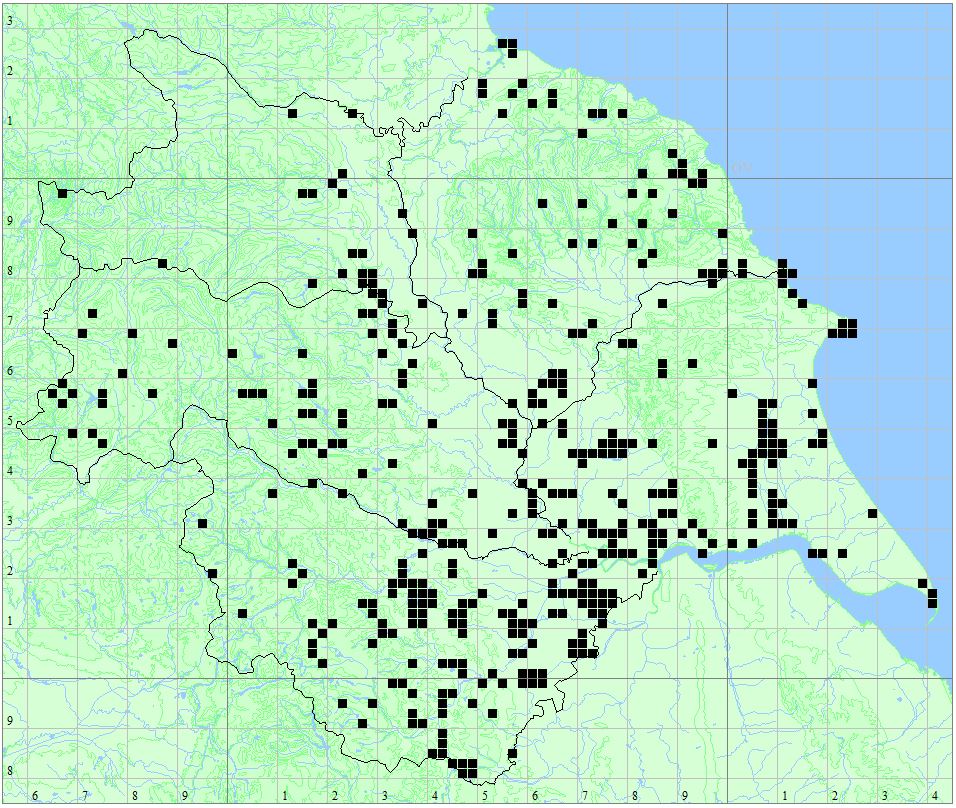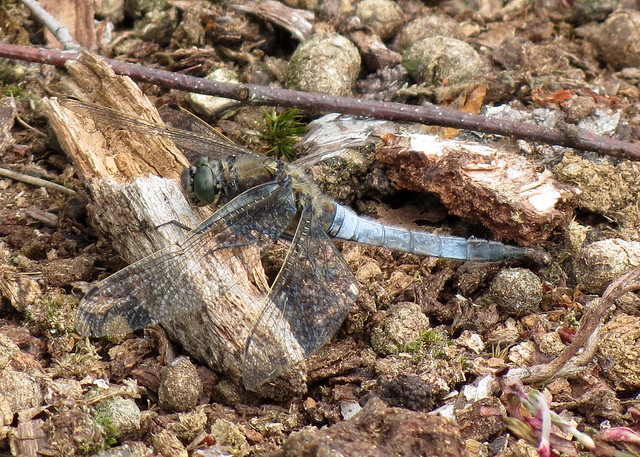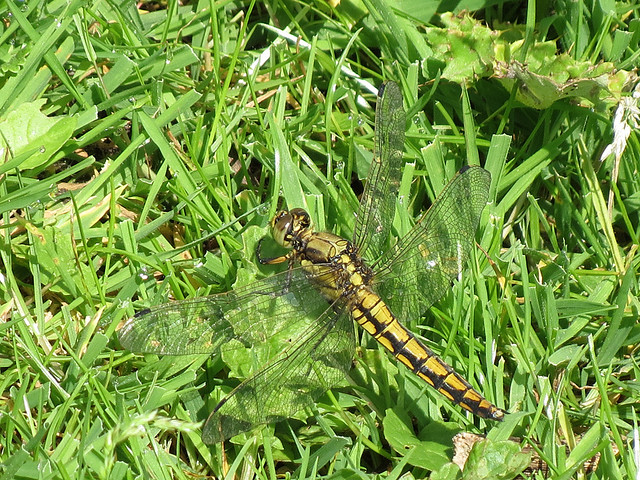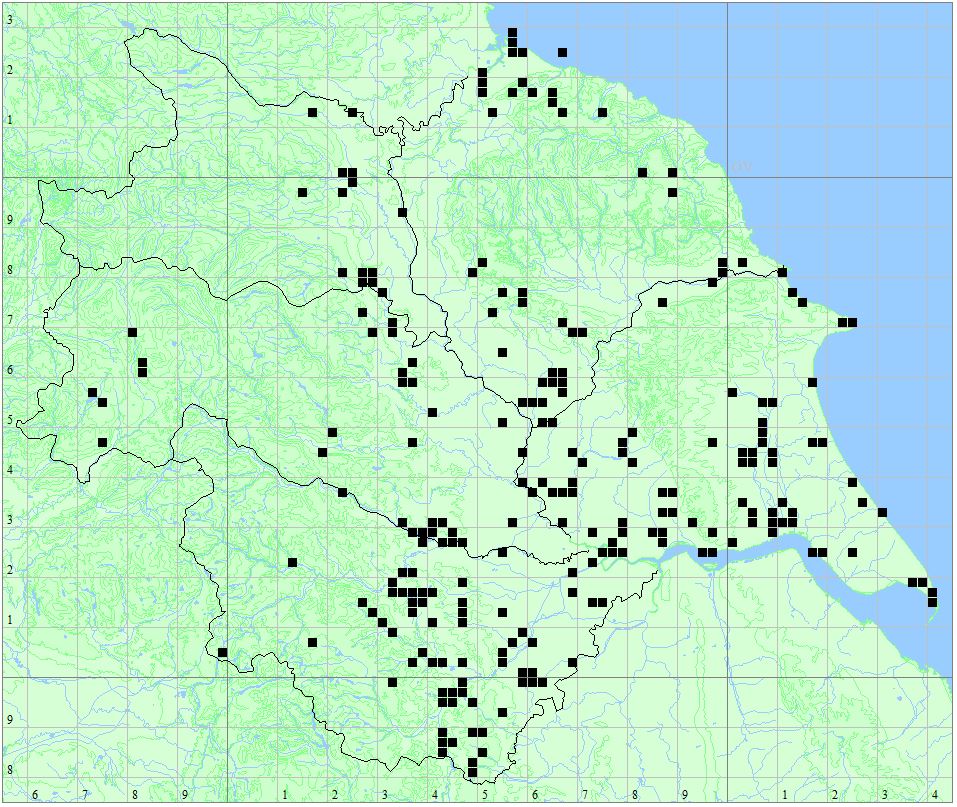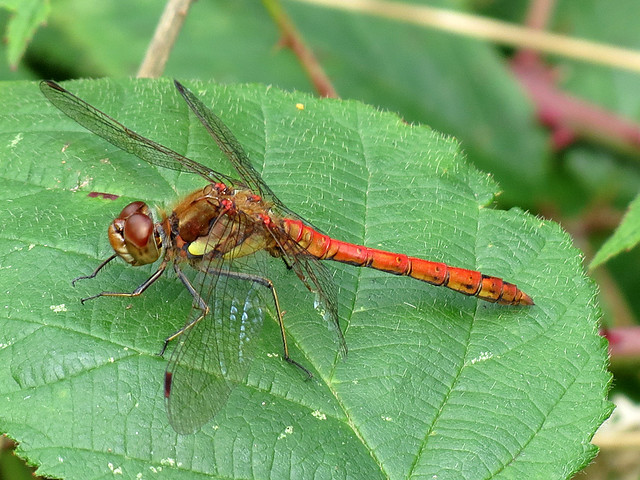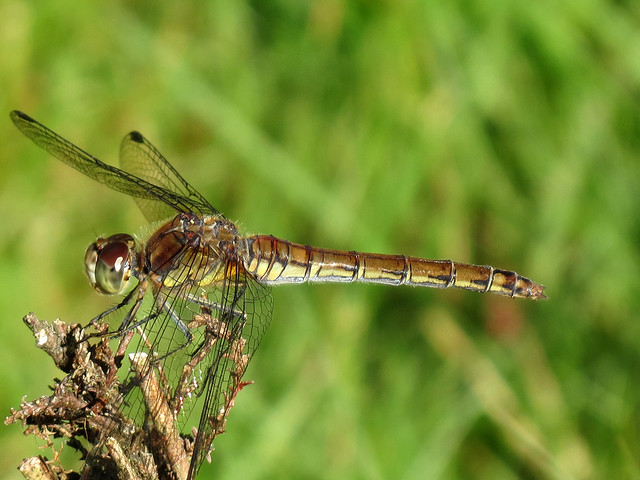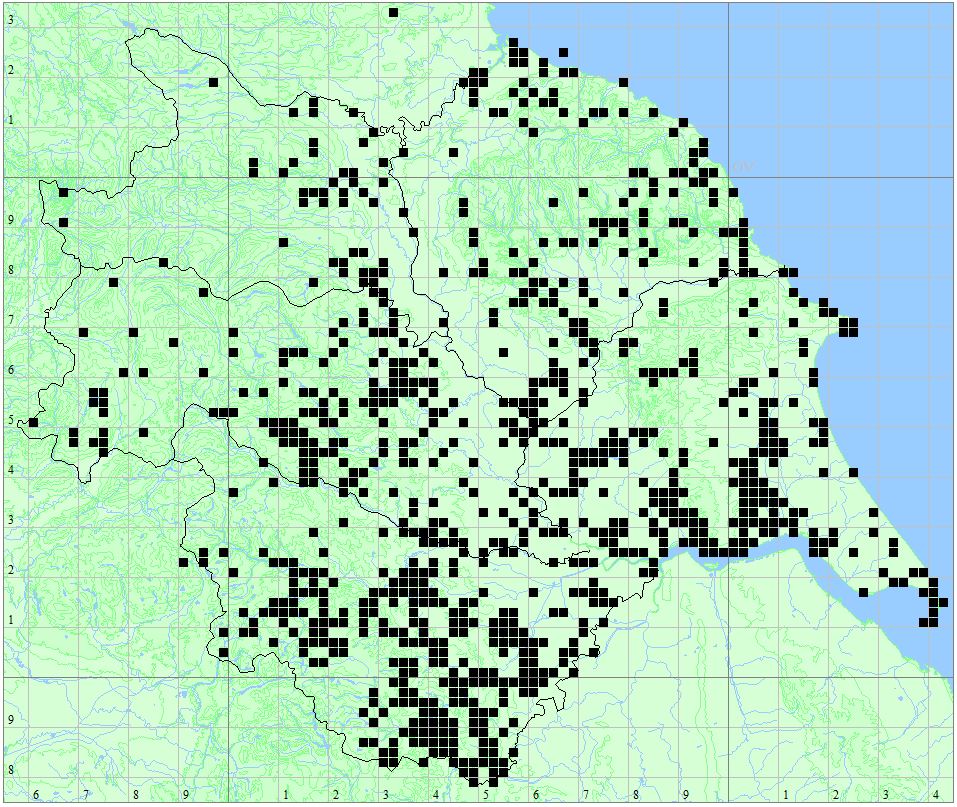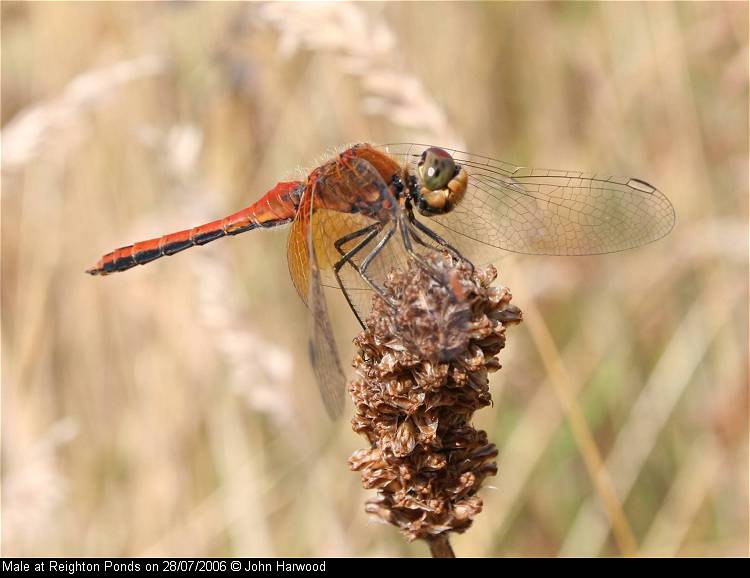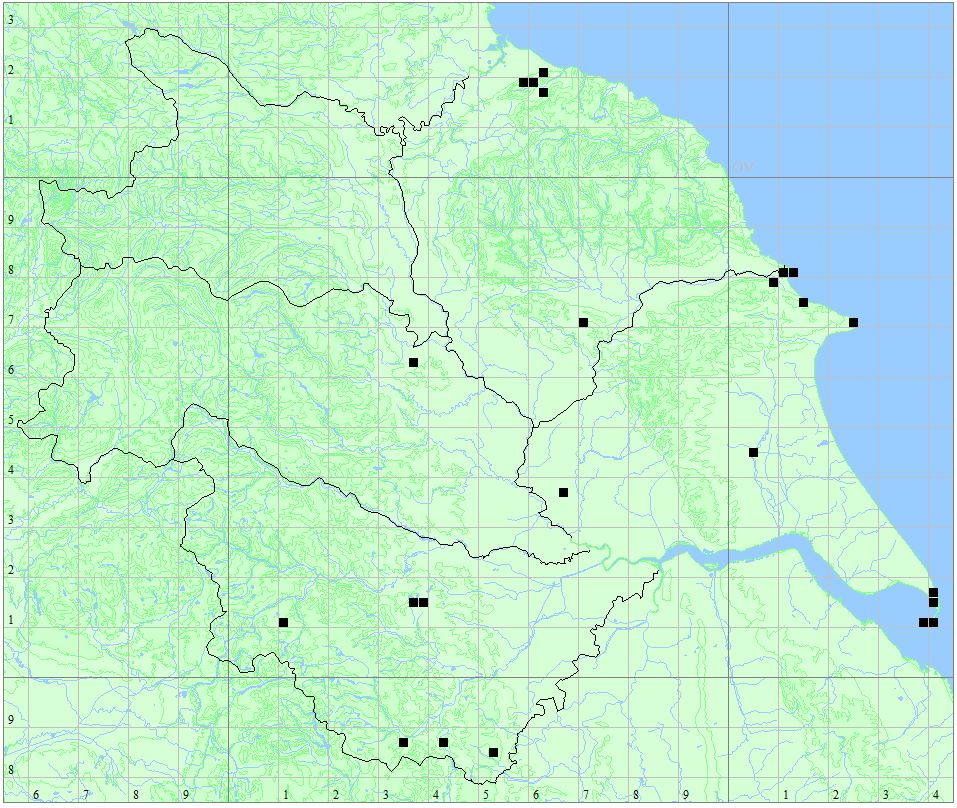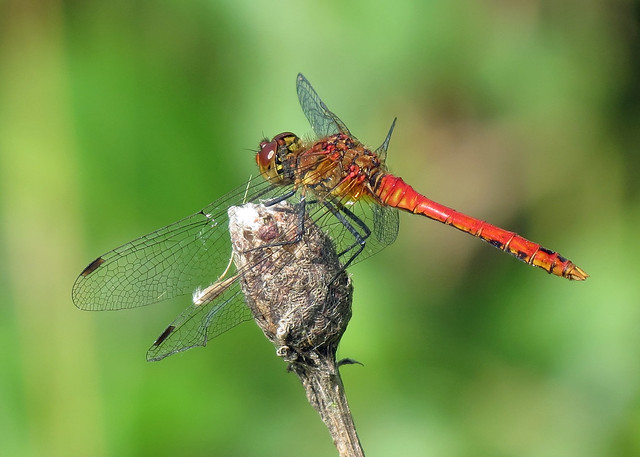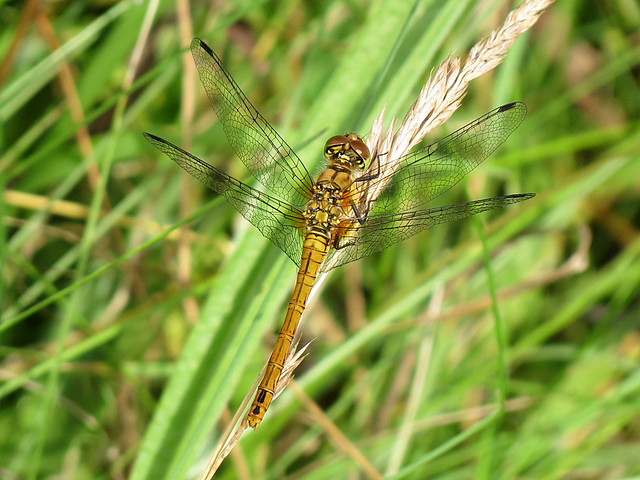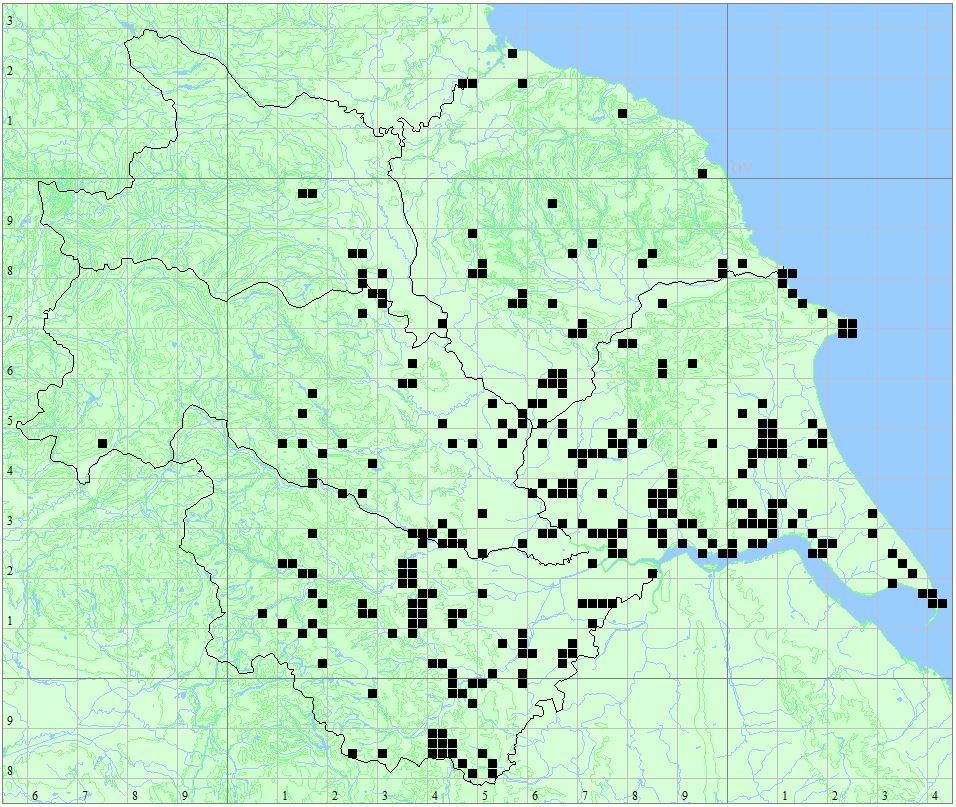<-Previous Species – Next Species->
Male
The only ‘Hawker’ species flying during May and much of June, with a slight overlap with Southern Hawker at the end of June. Thorax and abdomen distinctly hairy. Side of the thorax predominantly green, lacking the paired thoracic stripes of other ‘hawker’ species, with tapering green antehumeral stripes on the top. Abdomen has small blue paired spots.
Female
Thorax and abdomen distinctly hairy. Side of the thorax predominantly green, lacking the paired thoracic stripes of other ‘hawker’ species, with restricted, or absent, antehumeral stripes on the top. Abdomen has small yellow paired spots.
Habitat
Ponds, lakes, canals, ditches, dykes and marshy fens with tall emergent vegetation, such as rushes, reeds and sedges. Requires abundant floating vegetation for oviposition.
Behaviour
Early flight period is characteristic. Quickly settles when the sun goes in, compared to other Aeshnidae species, making it less easy to find in dull conditions. Males are territorial and patrol in and out of vegetation at low level. Can be found away from water in sheltered areas, though males will generally not wander far. Females only come to water to find a mate and oviposit. Copulation is long, taking place in nearby trees and shrubs, or long vegetation along the banks. The female oviposits into decomposing floating vegetation.
Flight Period
 Status
Status
Mainly VC61 and VC63, currently expanding its range.
Distribution Map
Locations
- Thorne Moors – Humberhead Peatlands NNR
- Thorpe Marsh
- Oakhill & Goole Brick Ponds
- Paull Holme Strays
- Potteric Carr
- Dundale Pond
- Spurn Point
- Saltmarshe Delph
- North Cave Wetlands
- Leven Canal
- Broomfleet Washlands
- Tophill Low Nature Reserve
<-Previous Species – Next Species->
